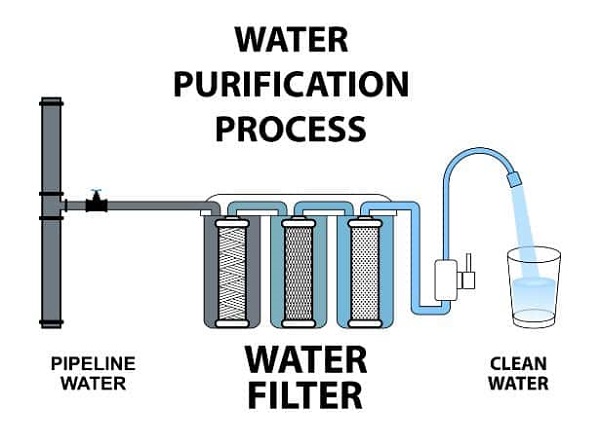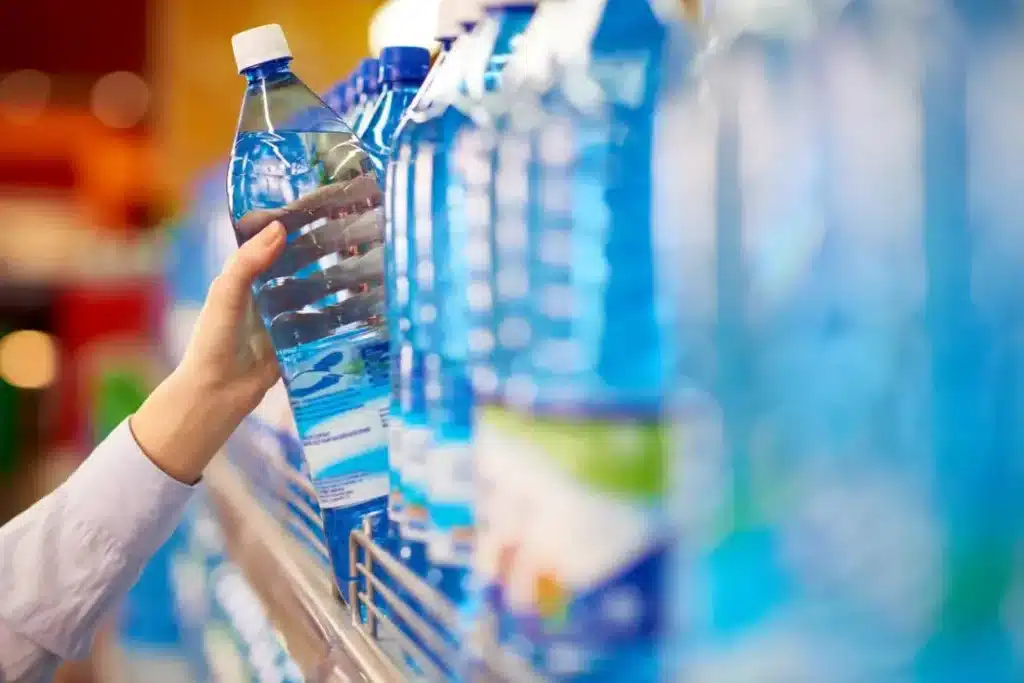Water, the essence of life, is a commodity people often take for granted, not realizing that, like most things, it too, has a shelf life. Understanding the water shelf life is critical for various reasons, such as health and safety, disaster preparedness, and environmental conservation. In this post, you’ll explore the concept of water shelf life, the various factors that affect it, and the importance of maintaining the quality of this life-giving resource.
Contents
What Does Water Shelf Life Mean?

The shelf life of water refers to the period during which water remains safe to consume. Typically, this pertains to stored water, as fresh, flowing water generally has an unlimited shelf life, provided it’s from a clean source. While bottled water manufacturers often stamp their products with a two-year expiration date, this is more for legal and logistical purposes than due to a decline in water quality.
Contrary to common perception, the water inside the bottle doesn’t “expire.” Instead, over time, its taste can be altered due to factors like the leaching of chemicals from its plastic container. This is why it’s crucial to differentiate between potable and non-potable water shelf life. Potable water shelf life refers to the duration that water remains safe for human consumption, while non-potable water refers to water unsuitable for drinking but could still be used for other purposes like irrigation or cleaning.
Natural Factors Affecting Water Shelf Life

A myriad of natural factors can influence water shelf life. At the forefront are microscopic organisms like bacteria, algae, and fungi, which can proliferate in stored water. These microorganisms cause biodegradation, leading to an unpleasant taste, smell and potential health risks. Hence, preventing microbial growth is crucial in extending the shelf life of stored water.
Temperature changes also significantly impact the shelf life of water. Higher temperatures can accelerate microbial growth and chemical reactions, leading to faster degradation of water quality. On the other hand, cool, dark storage conditions can help prolong the shelf life of water by slowing down these detrimental processes.
How Packaging Impacts Water Shelf Life

Packaging plays a significant role in water shelf life. The type of material used to store water can interact with the water itself, causing changes in taste and potentially introducing harmful chemicals. For instance, water stored in certain plastic containers may absorb some of the plastic’s chemicals over time, altering the water’s taste and possibly posing health risks.
Therefore, it’s important to use containers specifically designed for water storage.
Air exposure is another packaging-related factor affecting water shelf life. When water comes into contact with air, it can absorb gasses and become susceptible to microbial contamination, reducing its shelf life. Hence, using airtight containers for water storage is crucial to maintain water quality over an extended period.
The Role Of Water Treatment In Shelf Life

Treating water before storage is a key step in ensuring its long-term quality. Common water treatments such as chlorination and ozonation can help extend the shelf life of water by eliminating or significantly reducing the presence of harmful microorganisms. Chlorination, in particular, is widely used due to its ability to kill bacteria and other pathogens, rendering the water safe for consumption over longer periods.
Ozonation, another popular water treatment method, uses ozone gas to disinfect water, providing a residue-free alternative to chlorination. While these treatments increase the shelf life of water, it’s crucial to remember that they don’t provide indefinite protection. Over time, treated water may still become contaminated, particularly if not properly stored, reinforcing the importance of following correct storage practices.
Shelf Life Of Different Types Of Stored Water

Not all stored water is created equal, and the shelf life varies significantly depending on the type. Tap water, for example, usually contains chlorine, which provides some level of disinfection, but it also has a relatively short shelf life if stored improperly due to potential contamination from pipes and other sources. On the other hand, commercially bottled water often has a longer shelf life due to stringent production standards, including disinfection and airtight sealing.
Distilled water, which has undergone a process to remove virtually all minerals and impurities, has one of the longest shelf lives. However, it’s important to note that while distillation improves shelf life, it also removes beneficial minerals, potentially impacting the taste and nutritional benefits of the water. Regardless of the type of water, proper storage remains a fundamental aspect in maintaining its quality over time.
The Implication Of Shelf Life For Emergency Water Storage

The understanding of water shelf life becomes particularly essential in situations of emergency preparedness. In circumstances where regular water supply is disrupted due to natural disasters or other crises, having access to stored water that’s safe for consumption can be a lifesaver. Therefore, it’s important to store water properly and be aware of its potential shelf life.
When storing water for emergencies, it’s recommended to replace the stored water every six months to ensure freshness and safety. Storing water in a cool, dark place and using appropriate, clean containers can also help prolong the shelf life. In case of doubt about the water’s safety, boiling or disinfecting the water before consumption can help eliminate potential contaminants.
The Impact Of Shelf Life On Industrial Water Usage

Water shelf life also has substantial implications in industrial contexts. Industries such as food and beverage, pharmaceuticals, and cosmetics rely heavily on water quality and shelf life for their production processes and end products. As such, managing and extending water shelf life is a critical aspect of their operations.
Different industries have specific strategies to extend the shelf life of their water. This could range from sophisticated purification systems and strict storage conditions to adding preservatives. These practices ensure that the water used in their processes remains clean and safe, ultimately contributing to the quality of their products and the safety of their consumers.
How To Test Your Water Quality At Home

Simple methods exist for testing water quality at home, providing an initial assessment of your water’s safety. Test kits, readily available online or in stores, can identify common contaminants such as bacteria, lead, pesticides, nitrates, and water hardness. The process typically involves collecting a water sample, adding a reactive substance, and observing the resulting color change, indicating certain substances’ presence and concentration.
However, home testing kits are not comprehensive and may not detect all potential contaminants. If your water source is from a well, or if you have specific health concerns related to your water, consider professional testing services. These services can provide a thorough analysis of your water quality, including tests for harmful substances that home kits can’t detect, like certain types of bacteria and heavy metals.
Ways To Extend The Shelf Life Of Your Water

Several methods can help extend the shelf life of your water. One common method involves adding water preservatives, substances that inhibit the growth of bacteria and other microorganisms. When used correctly, these preservatives can significantly increase the shelf life of stored water.
Another crucial method is ensuring the use of appropriate, airtight containers for water storage. By limiting air exposure, you reduce the risk of contamination and maintain water quality for a longer period. Remember to store your water in cool, dark places, as light and heat can degrade water quality over time.
Be Mindful Of Water Shelf Life And Its Impacts!
Understanding water shelf life is a matter of both public health and environmental stewardship. It affects everyday consumption, prepares for emergencies, influences industrial operations, and impacts the environment. By extending the shelf life of water responsibly, you can ensure that this vital resource continues to nourish you without compromising your health. Remember, water is life, and preserving its quality is a collective responsibility everyone must undertake.